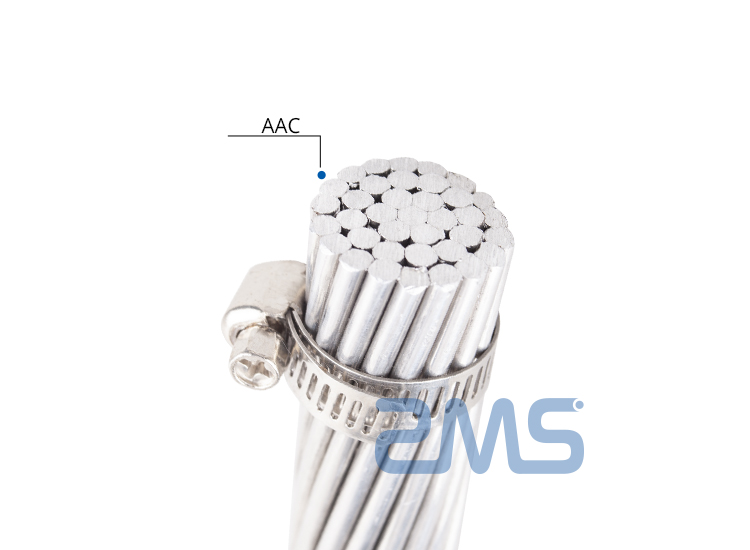The rapid growth of the renewable energy sector has led to an increasing demand for efficient and reliable power transmission solutions.
Solar farms, wind power plants, and other renewable energy sources require transmission networks that can handle high voltages while minimizing energy loss.

Traditional transmission methods face challenges such as cost, efficiency, and material sustainability. This is where All Aluminum Conductor (AAC) cable emerges as an ideal solution.
AAC cable is a type of electrical conductor made entirely of aluminum. It is widely used in overhead power transmission and distribution lines due to its lightweight nature and excellent conductivity.
High Conductivity: Pure aluminum provides excellent electrical conductivity, making it a preferred choice for short-distance transmission.
Lightweight Design: Compared to copper conductors, AAC cable is significantly lighter, reducing installation and structural costs.
Corrosion Resistance: Aluminum naturally forms an oxide layer that protects it from environmental corrosion, enhancing its durability in harsh conditions.
Cost-Effectiveness: Being more affordable than copper alternatives, AAC cables help reduce overall project costs.
Renewable energy projects require reliable power transmission infrastructure. AAC cables play a crucial role in ensuring the efficient transfer of electricity from renewable energy sources to the grid.
Below are the key areas where AAC cables are applied:
Solar farms require efficient power transmission systems to deliver electricity from photovoltaic panels to the grid. AAC cables are ideal due to their:
High conductivity, ensuring minimal energy loss.
Lightweight nature, reducing the load on transmission structures.
Corrosion resistance, making them suitable for outdoor installations.
Wind turbines generate electricity that needs to be transmitted over varying distances. AAC cables are widely used in wind power applications due to:
Their ability to handle fluctuating power loads efficiently.
Resistance to environmental factors such as salt, moisture, and UV exposure.
Cost advantages over copper conductors make large-scale wind projects more feasible.
As the energy sector shifts toward smart grid technology, AAC cables support the integration of renewable energy into modern power networks by:
Reducing transmission losses.
Enhancing the efficiency of distributed energy storage and supply.
Their flexibility and lightweight design allow easier installation in both urban and rural areas.
AAC cables are also used in offshore wind and tidal energy projects. Their high resistance to marine corrosion makes them suitable for installations in coastal and marine environments, ensuring durability and performance reliability.
One of the major reasons for the increasing adoption of AAC cables is their cost-effectiveness. Since aluminum is more affordable than copper, using AAC cables significantly reduces material and installation costs in large-scale projects.
Sustainability is a key factor in the renewable energy industry. AAC cables align with eco-friendly goals as aluminum is recyclable and has a lower environmental impact than other conductor materials.
With their natural corrosion resistance and high reliability, AAC cables require minimal maintenance, reducing long-term operational costs for renewable energy projects.
The demand for advanced power transmission solutions is driving technological advancements in AAC cables.
Some notable trends include:
Research and development efforts are focused on improving aluminum conductivity by incorporating advanced alloys, making AAC cables even more efficient for power transmission.
AAC cables are being integrated with smart grid technology, enhancing their compatibility with automated and intelligent energy distribution systems.
With the increasing investment in offshore wind farms, AAC cables are being designed to withstand extreme marine conditions, ensuring long-lasting performance.
AAC cables are proving to be an essential component in the renewable energy sector.
Their high conductivity, cost-effectiveness, durability, and environmental sustainability make them the preferred choice for power transmission in solar farms, wind energy projects, and smart grids.
As renewable energy continues to grow, AAC cables will play a vital role in shaping the future of efficient and sustainable power transmission.
For businesses and project developers looking to optimize their power transmission infrastructure, AAC cables offer a reliable, economical, and eco-friendly solution to meet the demands of the evolving energy landscape.